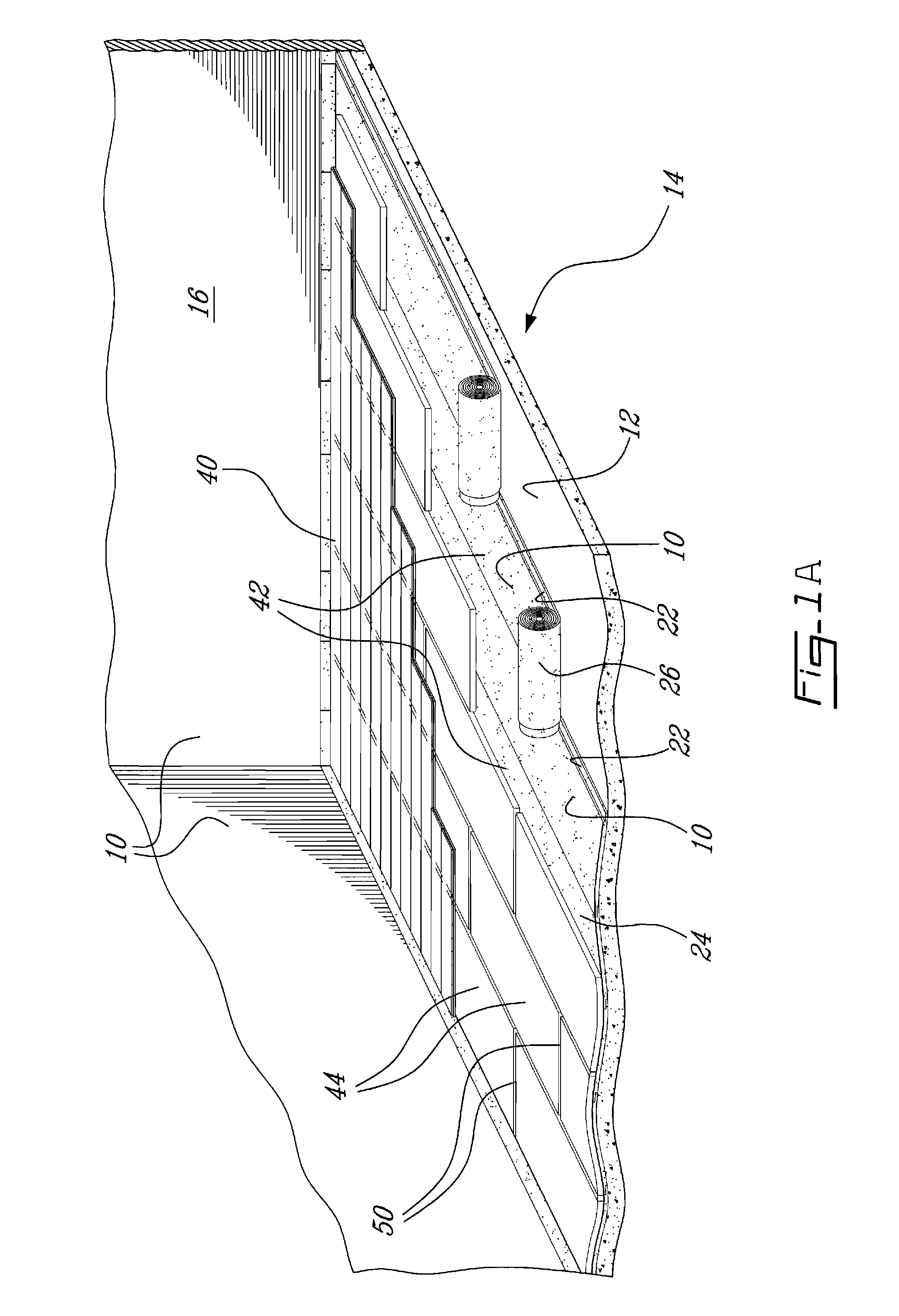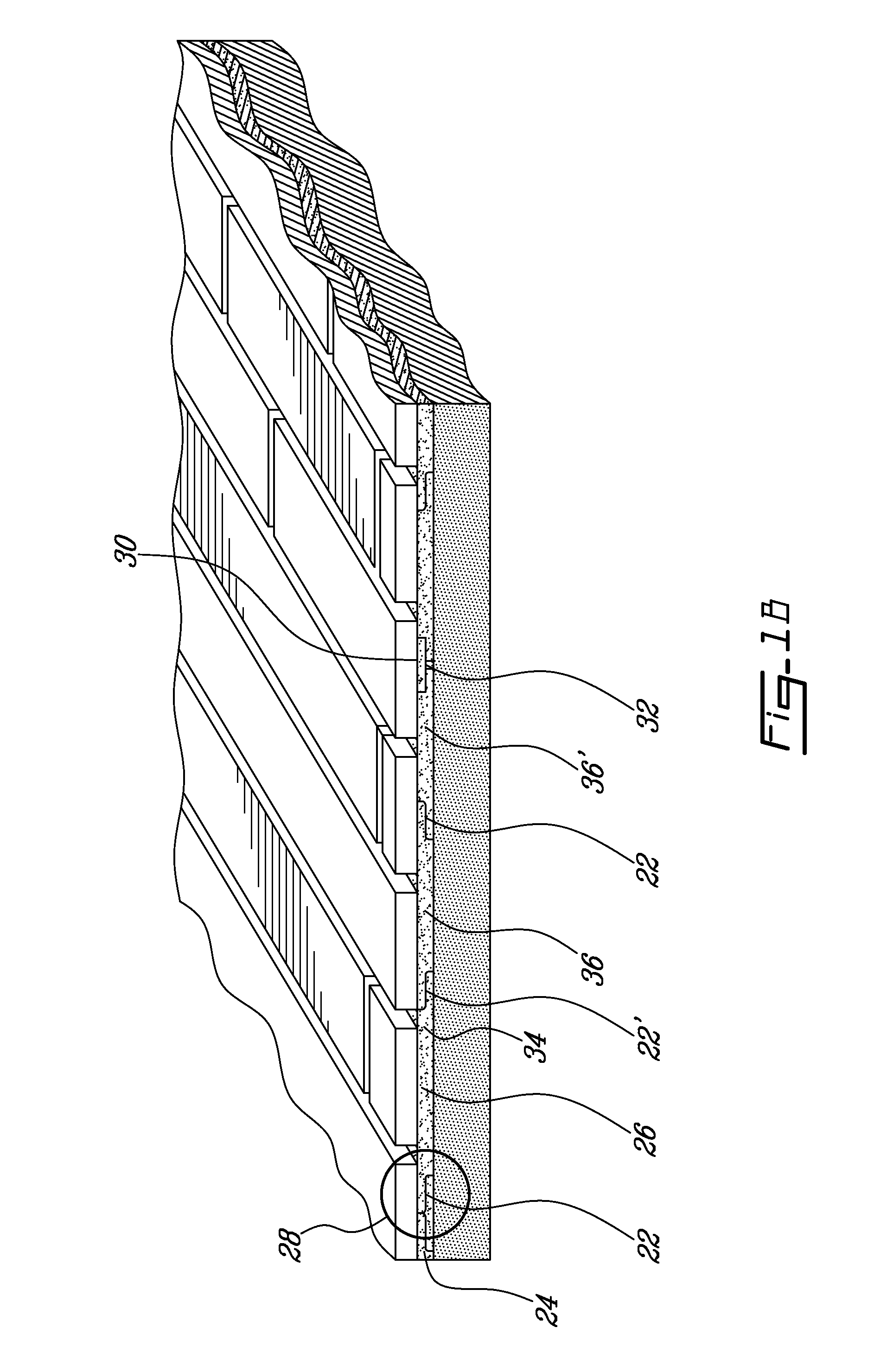Moisture barrier underlayment with intermediate layer to accommodate expansion and contraction
a moisture barrier and intermediate layer technology, applied in the field of membranes, can solve the problems of floor surface not being able to tolerate the presence of bumps, limitation is a major drawback in the use of such membranes, and the foundation limitation of the way moisture barriers are installed
- Summary
- Abstract
- Description
- Claims
- Application Information
AI Technical Summary
Benefits of technology
Problems solved by technology
Method used
Image
Examples
Embodiment Construction
[0038]FIG. 1a illustrates a floor assembly wherein rolls of flexible moisture barrier membrane are laid down on a subfloor (12) and then covered with a layer of intermediate floor panels (44) on which floor boards (40) (in the illustrated example wood planks) are installed. In the case of FIG. 1a, the subfloor (12) is concrete but it could be any type of material commonly used as subfloor material such as plywood, and is either the subfloor of a basement or the subfloor (12) of a multi storey concrete structure building. In both cases, concrete is known for holding moisture over a long period of time and the problem is compounded when a slab of concrete is laid directly over a soil (14) that has high water content.
[0039]Since moisture content (MC) coming from underneath and through the subfloor (12) can be, at times, much higher than the MC in the ambient air (16) above the subfloor (12), that is the ambient air (16) in a given room, it is wise to block the ingress of moisture from ...
PUM
| Property | Measurement | Unit |
|---|---|---|
| width | aaaaa | aaaaa |
| width | aaaaa | aaaaa |
| thickness | aaaaa | aaaaa |
Abstract
Description
Claims
Application Information
 Login to View More
Login to View More - R&D
- Intellectual Property
- Life Sciences
- Materials
- Tech Scout
- Unparalleled Data Quality
- Higher Quality Content
- 60% Fewer Hallucinations
Browse by: Latest US Patents, China's latest patents, Technical Efficacy Thesaurus, Application Domain, Technology Topic, Popular Technical Reports.
© 2025 PatSnap. All rights reserved.Legal|Privacy policy|Modern Slavery Act Transparency Statement|Sitemap|About US| Contact US: help@patsnap.com



